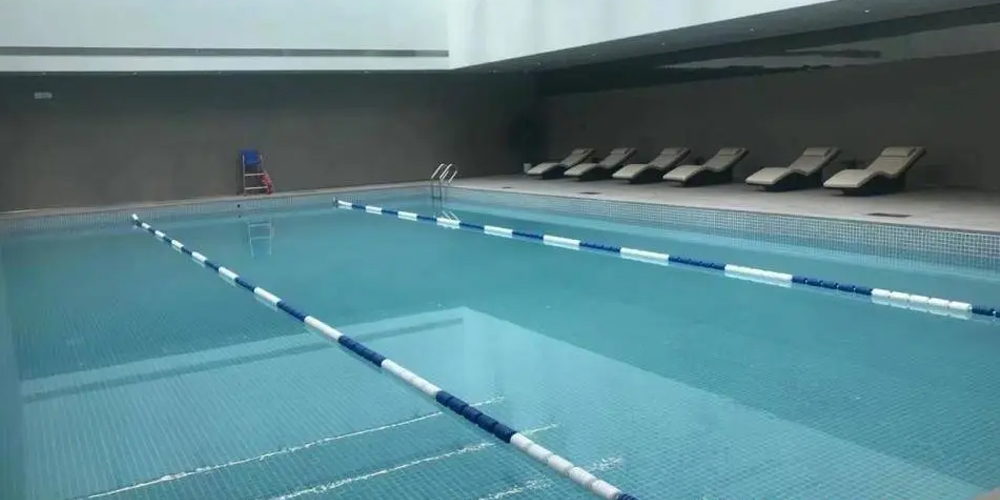Ua kom cov dej chemistry hauv koj lub pas dej sib npaug yog ib txoj haujlwm tseem ceeb thiab tsis tu ncua. Tej zaum koj yuav txiav txim siab tias qhov kev ua haujlwm no tsis tas yuav xaus thiab tedious. Tab sis yuav ua li cas yog tias ib tug neeg hais rau koj tias muaj cov tshuaj uas tuaj yeem ua rau lub neej ntev thiab ua haujlwm ntawm cov tshuaj chlorine hauv koj cov dej?
Yog, cov khoom ntawd yogCyanuric Acid(CYA). Cyanuric acid yog cov tshuaj hu ua chlorine stabilizer lossis regulator rau cov dej hauv pas dej. Nws lub luag haujlwm tseem ceeb yog kom ruaj khov thiab tiv thaiv cov tshuaj chlorine hauv dej. Nws tuaj yeem txo qhov decomposition ntawm cov tshuaj chlorine hauv cov dej hauv pas dej los ntawm UV. Nws ua rau cov tshuaj chlorine nyob ntev dua thiab tuaj yeem tswj tau cov tshuaj tua kab mob ntawm lub pas dej tau ntev.
Cyanuric Acid ua haujlwm li cas hauv lub pas dej da dej?
Cyanuric acid tuaj yeem txo qhov poob ntawm cov tshuaj chlorine hauv cov dej hauv pas dej hauv qab UV hluav taws xob. Nws tuaj yeem txuas ntxiv lub neej ntawm cov tshuaj chlorine hauv lub pas dej. Qhov no txhais tau tias nws tuaj yeem khaws cov tshuaj chlorine hauv lub pas dej tau ntev.
Tshwj xeeb tshaj yog rau cov pas dej sab nraum zoov. Yog tias koj lub pas dej tsis muaj cyanuric acid, cov tshuaj tua kab mob chlorine hauv koj lub pas dej yuav tau noj sai heev thiab cov tshuaj chlorine muaj yuav tsis raug tswj xyuas tas li. Qhov no xav kom koj mus txuas ntxiv nqis peev ntau ntawm cov tshuaj tua kab mob chlorine yog tias koj xav kom cov dej huv. Qhov no ua rau cov nqi tu thiab pov tseg ntau cov neeg ua haujlwm.
Txij li thaum cyanuric acid ruaj khov ntawm chlorine nyob rau hauv lub hnub, nws raug nquahu kom siv tus nqi tsim nyog ntawm cyanuric acid ua cov tshuaj chlorine stabilizer hauv cov pas dej sab nraum zoov.
Yuav Ua Li Cas Kho Cyanuric Acid Qib:
Raws li nrog tag nrho lwm yampas dej chemicals, nws yog ib qho tseem ceeb rau kev ntsuam xyuas cov qib cyanuric acid txhua lub lim tiam. Kev ntsuam xyuas tsis tu ncua tuaj yeem pab txheeb xyuas cov teeb meem ntxov thiab tiv thaiv lawv los ntawm kev tswj hwm. Qhov zoo tshaj plaws, qib cyanuric acid hauv lub pas dej yuav tsum nyob nruab nrab ntawm 30-100 ppm (ib feem ntawm lab). Txawm li cas los xij, ua ntej koj pib ntxiv cyanuric acid, nws yog ib qho tseem ceeb kom nkag siab txog cov tshuaj chlorine siv hauv pas dej ua ke.
Muaj ob hom tshuaj tua kab mob chlorine hauv cov pas dej da dej: cov tshuaj chlorine stabilized thiab chlorine tsis ruaj khov. Lawv txawv thiab txhais raws li seb cyanuric acid yog tsim tom qab hydrolysis.
Stabilized chlorine:
Stabilized chlorine feem ntau yog sodium dichloroisocyanurate thiab trichloroisocyanuric acid thiab haum rau cov pas dej sab nraum zoov. Thiab nws kuj muaj qhov zoo ntawm kev nyab xeeb, lub neej ntev txee thiab tsis tshua muaj kev khaus. Txij li thaum Stabilized chlorine hydrolyze los tsim cyanuric acid, koj tsis tas yuav txhawj xeeb txog kev raug tshav ntuj. Thaum siv cov tshuaj chlorine stabilized, qib cyanuric acid hauv lub pas dej yuav maj mam nce ntxiv thaum lub sijhawm. Feem ntau hais lus, qib cyanuric acid tsuas yog poob qis thaum lub sijhawm tso dej thiab rov ua dua, lossis rov qab ntxuav. Ntsuam xyuas koj cov dej txhua lub lim tiam kom taug qab cov qib cyanuric acid hauv koj lub pas dej.
Cov tshuaj chlorine tsis ruaj khov: Cov tshuaj chlorine tsis ruaj khov tuaj hauv daim ntawv calcium hypochlorite (cal-hypo) lossis sodium hypochlorite (kua tshuaj chlorine lossis dej bleaching) thiab yog cov tshuaj tua kab mob rau cov pas dej da dej. Lwm daim ntawv ntawm cov tshuaj chlorine tsis ruaj khov yog tsim nyob rau hauv cov pas dej ntsev nrog kev pab los ntawm lub tshuab hluav taws xob chlorine. Txij li daim ntawv no ntawm cov tshuaj tua kab mob chlorine tsis muaj cyanuric acid, stabilizer yuav tsum tau muab ntxiv cais yog tias nws siv los ua cov tshuaj tua kab mob tseem ceeb. Pib nrog cyanuric acid theem ntawm 30-60 ppm thiab ntxiv ntxiv raws li xav tau los tswj qhov zoo tagnrho qhov ntau.
Cyanuric acid yog cov tshuaj zoo heev los tswj cov tshuaj tua kab mob chlorine hauv koj lub pas dej, tab sis ceev faj txog kev ntxiv ntau dhau. Tshaj cyanuric acid yuav txo cov tshuaj tua kab mob ntawm cov tshuaj chlorine hauv dej, tsim "chlorine xauv".
Kev tswj kom zoo tshuav nyiaj yuav ua rau covchlorine hauv koj lub pas dejua hauj lwm zoo dua. Tab sis thaum koj xav tau ntxiv cyanuric acid, thov nyeem cov lus qhia kom zoo. Txhawm rau kom koj lub pas dej ua ke zoo meej dua.
Post lub sij hawm: Lub Xya hli ntuj-25-2024


